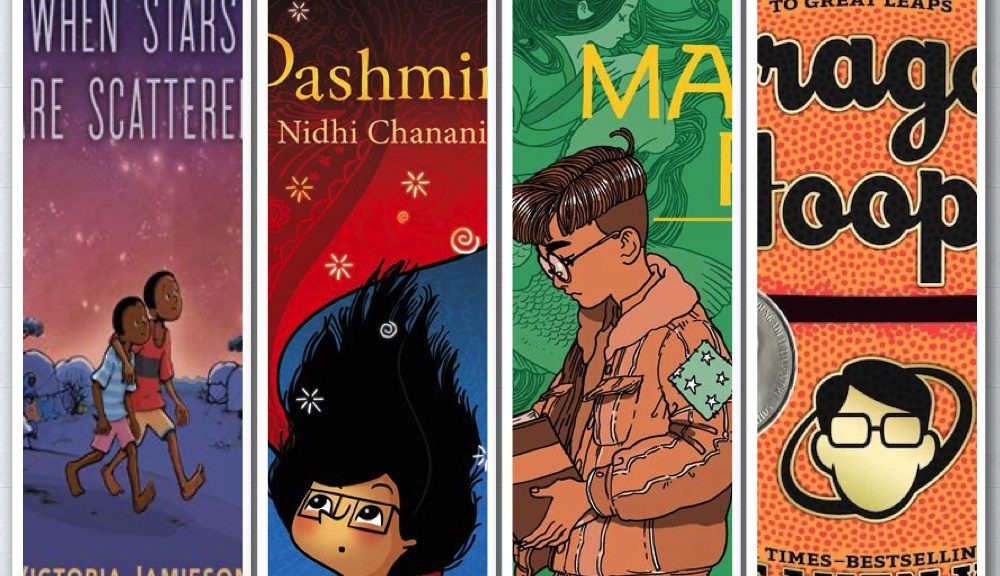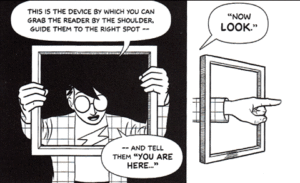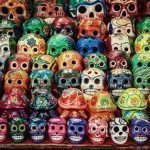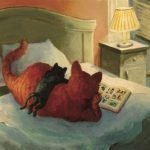
Weeks 10 & 11 (Make Cycle 5: Graphic Novels)

Make Cycle 5: Graphic Novels (When Stars are Scattered, Pashmina, The Magic Fish OR Dragon Hoops)
Oct 25-Nov 7
In this make cycle, we’ll read graphic novels written for kids and young adults. Graphic novels can be a great resource for wild readers, especially for reluctant readers you might come across in your teaching. This is not to say that graphic novels are easier to read, and in fact, the visual element can actually be challenging for some of us. But some students will find the visual challenges intriguing and simply more interesting to read.
As you read, and similar to our experiences with the free verse novels, you might consider how a graphic novel changes your reading practices. Does reading this text slow you down? Or do you read more quickly? How much time do you spend on the images or thinking about color or font choices made by the author? I find comics and graphic novels so interesting in the way that the genre plays with “the gutter”: the place in between the panels that allows the reader to fill in the gaps in the story. Scott McCloud has some great resources for reading comics and you might find this intro to gutters and transitions in comics helpful. As he argues:
“Comic artists need gutters as well as the reader’s participation in drawing conclusions from them in order for time and motion to take place.”
Our work for Make Cycle 5 in a nutshell:
- By Friday, Oct 29: Respond to prompts using a resource from Scholastic and your graphic novel choice. (giving you a little more time this week for the prompts, so due Friday instead of Wednesday)
- Sunday, Oct 31: Enjoy a break for Halloween weekend. 😉
- By Wednesday, Nov 3: Respond to a different prompt using the resource from Scholastic and your graphic novel choice.
- By Sunday, Nov 7: Make 5: Graphic Novels (hoping you’ll try out one of the comic generator sites for your make!)
Week 10: Oct 25-31
Instead of reading from Donalyn Miller this week (we’ll return to Reading in the Wild in the next make cycle), I’d like you to spend time with this resource from Scholastic–A Guide to Using Graphic Novels with Children and Teens–that I think will help us to think about how to teach using this genre. Start by reading through the resource: it is packed with links and suggestions for teaching with graphic novels.
By FRIDAY, Oct 29, please respond to these prompts:
- Start by summarizing what you know about your graphic novel so far: tell us what the story is about and what you like, don’t like, how the reading is going so far…
- Then, explore any of the links from page 8 of the guide (from the General Resources page) and share with us what you discover: What did you learn from visiting one of the sites they recommend or reading one of the articles or looking over a resource? How might you make use of the resource you chose?
- Then, let’s try out the discussion ideas they list on pages 9-10. Choose ONE of the prompts below and respond using your graphic novel.
a. Can you find all the elements that make up graphic novels: panels, word balloons, sound effects, motion lines, narration, and background colors? If you take out any one of these, what do you lose? Can you still understand the story?
b. How do you read a graphic novel? Do you look at the images and words together, panel by panel? Do you read all the text on the page and then go back and look at the pictures? Do you look at the pictures first and then go back and read the words? There’s no right way to read a graphic novel, and many readers go through them differently. Compare how you read an assigned graphic novel with how your neighbor does, and see if how you read it is different or the same.
c. Graphic novels use both words and images. Pick a page or a sequence from a graphic novel and think through what you learn from just the words. Then think about what you learn from just the images. Are they telling you the same information, or are they giving you different information? How do they work together?
d. Expressions and gestures are important to how we understand characters. Can you find an example of a particular expression or movement that you think shows a significant character trait?
e. Literary devices frequently featured in graphic novels include point of view, flashbacks, foreshadowing, and metaphor. Choose a graphic novel and see if you can find examples of a traditional literary device within its pages.
f. Many elements of graphic novels are similar to what you see in movies. A graphic novel creator can be the director in deciding what each panel and page shows. Think about the frame of each panel. What are you seeing? What are you not seeing? What about the camera angle? The distance from the subject of the panel? Are there any sound effects? Why did the creator make those choices?
g. On top of being a director, graphic novel creators are also editors. The action in comics happens “in the gutters,” or in the spaces between each panel. Sometimes big things happen in the time it takes to turn the page. Looking through a graphic novel, can you find a specific sequence of panels or a page turn that you think is dramatic or exciting? Why do you think the creator chose that sequence of images or that page turn to emphasize that moment?
h. The pace at which panels change, and how much time seems to pass, is carefully presented. Time, in how fast or slowly it seems to pass, is important in how panels change. Can you find a sequence where the pacing is slow, observing a character or scene? How about a sequence when everything speeds up?
i. In prose works, details are given to the reader in the descriptions. In graphic novels, details are in the images in the background, character design, clothing, and objects. Take a look at this graphic novel and see if you can find five details in the way a person or object is drawn. What does each detail tell you about the characters? The place? The world?
Post in Currents: Graphic Novel Discussion 1 by Oct 29
 No Sunday Prompt this week; just a Friday prompt. Happy Halloween or Día de Muertos (or Happy Fall)!
No Sunday Prompt this week; just a Friday prompt. Happy Halloween or Día de Muertos (or Happy Fall)!
Week 11: Nov 1-7
By Wednesday, Nov 3:
Choose a different prompt from the list last week (above) and respond using your graphic novel again. *If you want to get creative, answer the prompt in a comic format. You can use a comic creator resource or draw a comic with your response. Lots of comic generators if you google “comic generator,” but I like Pixton and Make Beliefs Comix. Or, you can write out your response…I won’t judge. 😉 It could be cool to try out a tool you could use with kids. Alternatively, you can use one of these tools for your Make this week.
Post in Currents: Graphic Novel Discussion 2
By Sunday, Nov 7: Make 5 (Graphic Novel Make)
I would encourage you this week to use the graphic novel and comic genre as inspiration for your make. As I mentioned above, think about using one of the comic generators to create a comic (about pandemic life perhaps? Or to share a story from your childhood?) or try to draw a comic. You might even consider adding a scene or a new ending to the graphic novel you read for this cycle.
The goal: share your book in a creative way with others so that perhaps they too can get excited about reading the book. Another goal: use the make as a way to think about the ideas/themes/characters in the books we are reading. Try out making something that you might ask your future students to make.
You can create a piece of art, a book trailer or short film, write a song, write fanfiction, create a game, create a lesson plan or class activity…lots of possible ways to share. You can upload an image of your artifact, share a link, share a video, etc.
As always, once you create your “make,” you will also write a brief artist’s/writer’s statement explaining what you were attempting to do with this make: how did you approach this artifact? what worked? what did not work out as planned?
Post in Currents: Graphic Novel MAKE
Thank you everyone!